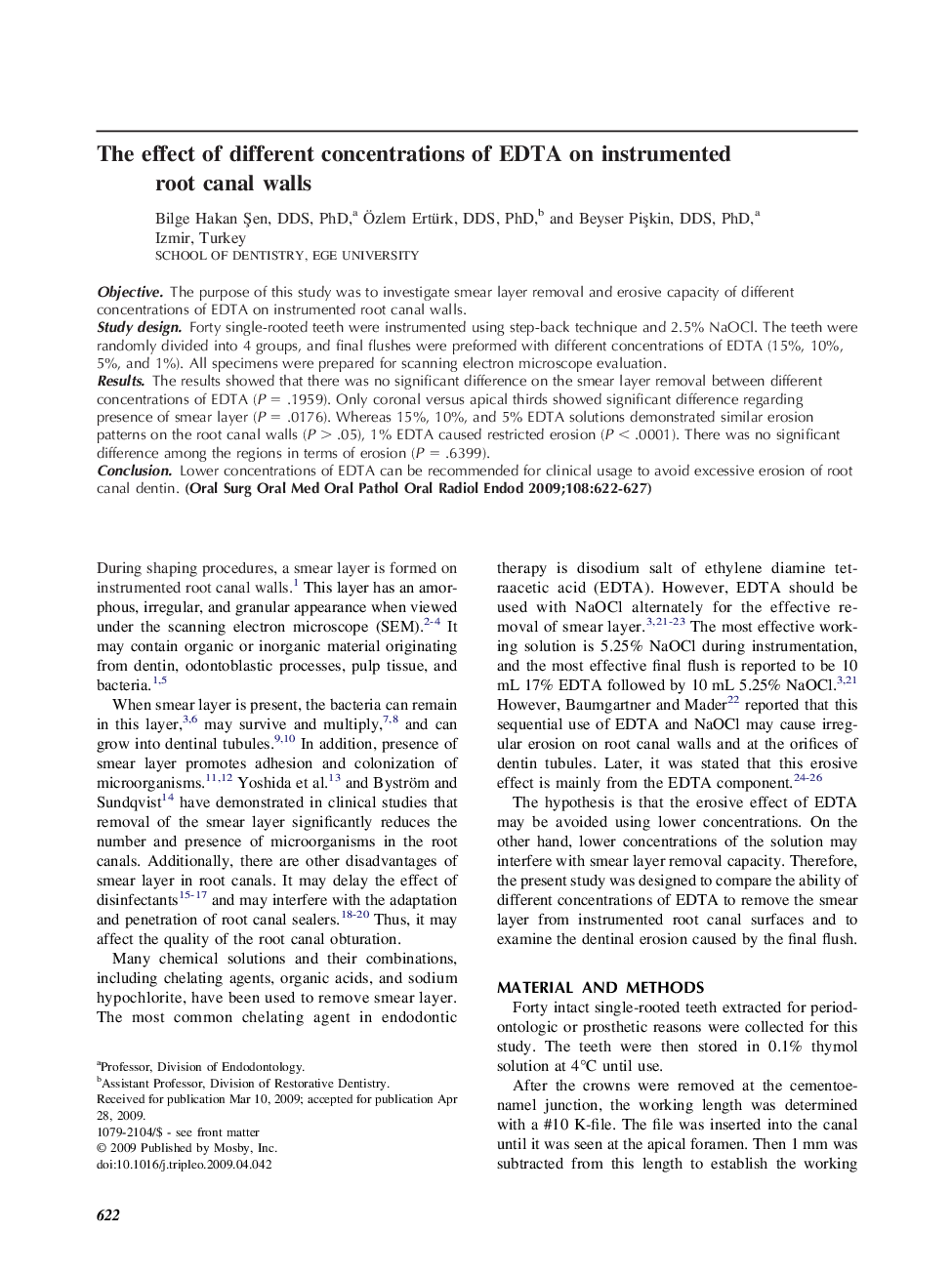| Article ID | Journal | Published Year | Pages | File Type |
|---|---|---|---|---|
| 3167939 | Oral Surgery, Oral Medicine, Oral Pathology, Oral Radiology, and Endodontology | 2009 | 6 Pages |
ObjectiveThe purpose of this study was to investigate smear layer removal and erosive capacity of different concentrations of EDTA on instrumented root canal walls.Study designForty single-rooted teeth were instrumented using step-back technique and 2.5% NaOCl. The teeth were randomly divided into 4 groups, and final flushes were preformed with different concentrations of EDTA (15%, 10%, 5%, and 1%). All specimens were prepared for scanning electron microscope evaluation.ResultsThe results showed that there was no significant difference on the smear layer removal between different concentrations of EDTA (P = .1959). Only coronal versus apical thirds showed significant difference regarding presence of smear layer (P = .0176). Whereas 15%, 10%, and 5% EDTA solutions demonstrated similar erosion patterns on the root canal walls (P > .05), 1% EDTA caused restricted erosion (P < .0001). There was no significant difference among the regions in terms of erosion (P = .6399).ConclusionLower concentrations of EDTA can be recommended for clinical usage to avoid excessive erosion of root canal dentin.
